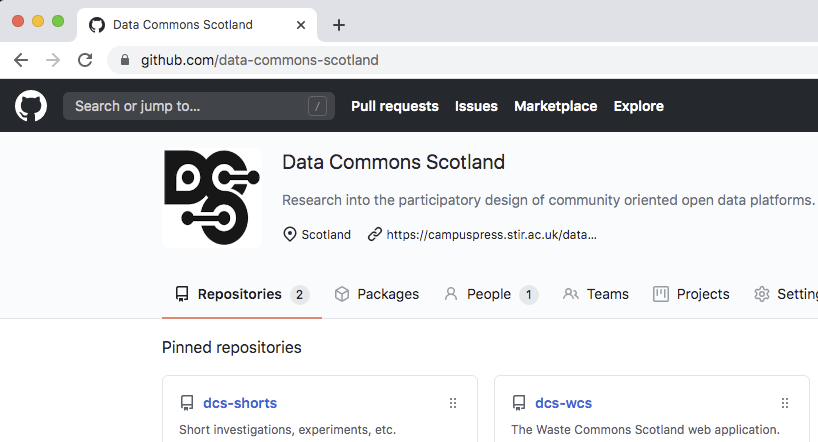
This project needs more presence on-line. Thanks for prompting this Ian! (And be sure to read Ian’s posting on the state of open data.) So, this week…
- Anna & I have made a start on revamping this, the project’s public WordPress site, which Anna created late last year. This site is accessible at https://campuspress.stir.ac.uk/datacommonsscotland. The idea is that we’ll publish on it limited-lifespan information such as relevant happenings & blog postings and take feedback comments.
- Also, I’ve create a public GitHub site at https://github.com/data-commons-scotland for some of the project’s longer-lifespan outputs such as concepts/models, standards, research output and open source code. GitHub will continue to preserve these (hopefully useful) outputs beyond the lifespan of this project. I’ve made a start by adding some investigation reports (dcs-shorts) and example web application source code (dcs-wcs).




